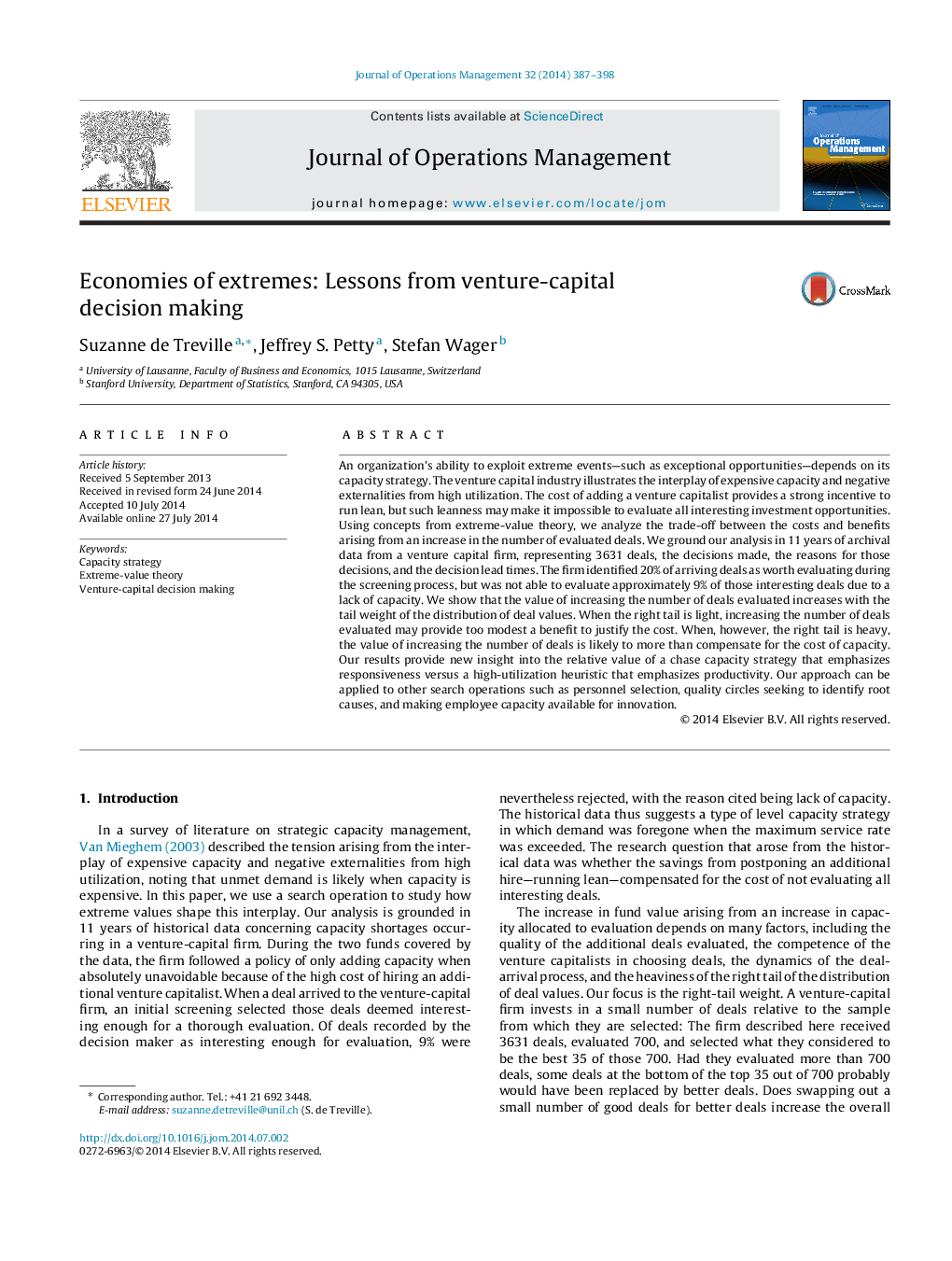ترجمه فارسی عنوان مقاله
اقتصاد افراط: درسهایی از تصمیم سازی سرمایه گذاری مخاطره آمیز
عنوان انگلیسی
Economies of extremes: Lessons from venture-capital decision making
| کد مقاله | سال انتشار | تعداد صفحات مقاله انگلیسی |
|---|---|---|
| 48153 | 2014 | 12 صفحه PDF |
منبع

Publisher : Elsevier - Science Direct (الزویر - ساینس دایرکت)
Journal : Journal of Operations Management, Volume 32, Issue 6, September 2014, Pages 387–398
ترجمه کلمات کلیدی
استراتژی ظرفیت - نظریه افراطی ارزش - تصمیم سازی سرمایه گذاری مخاطره آمیز
کلمات کلیدی انگلیسی
Capacity strategy; Extreme-value theory; Venture-capital decision making

